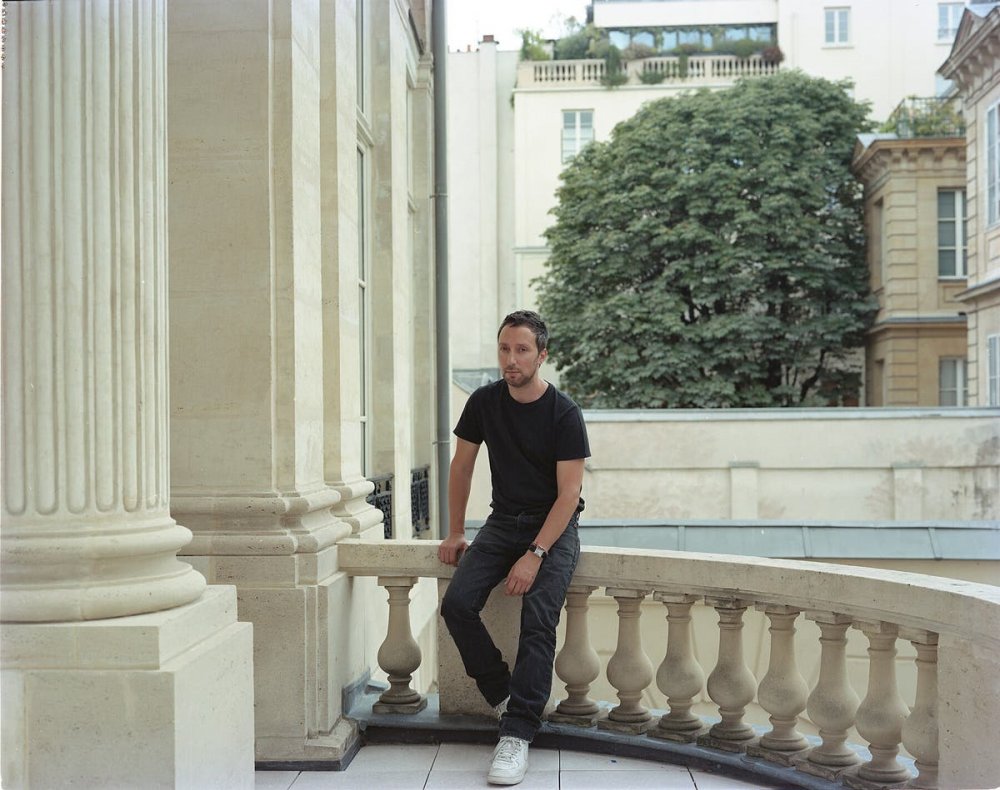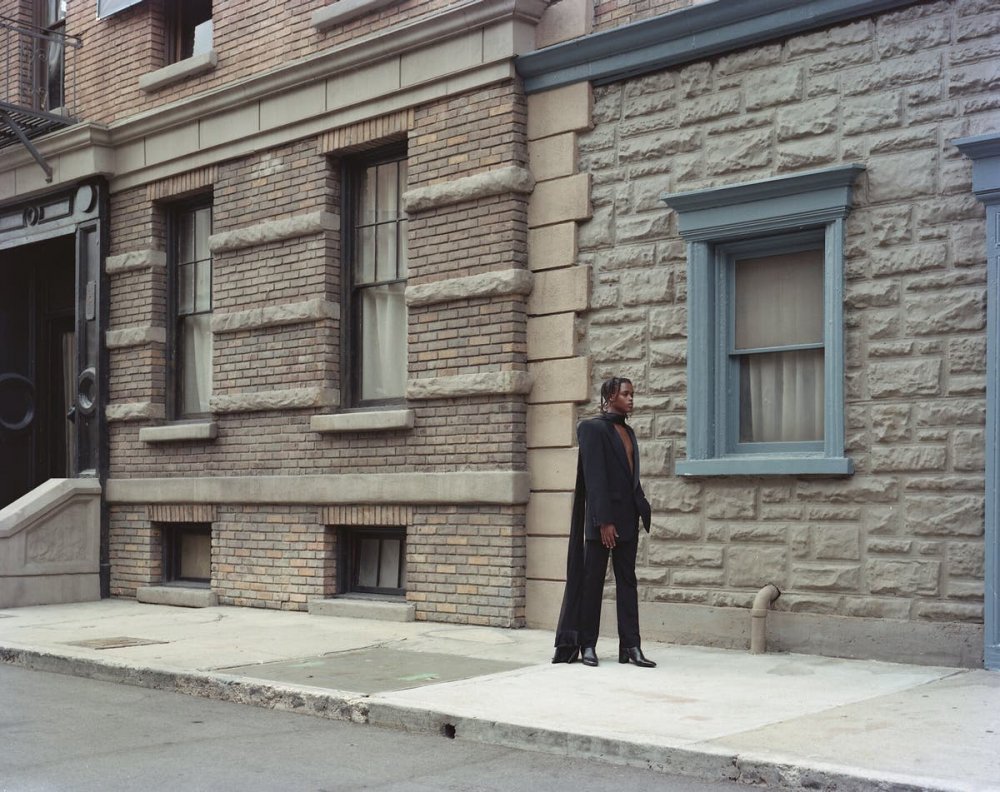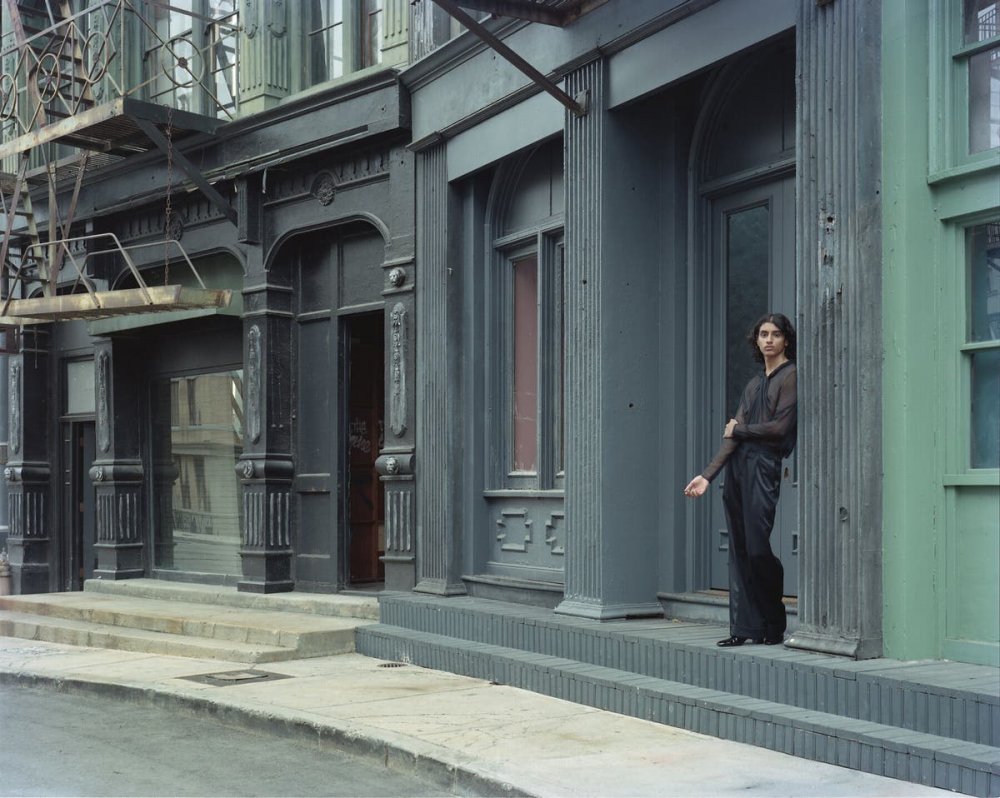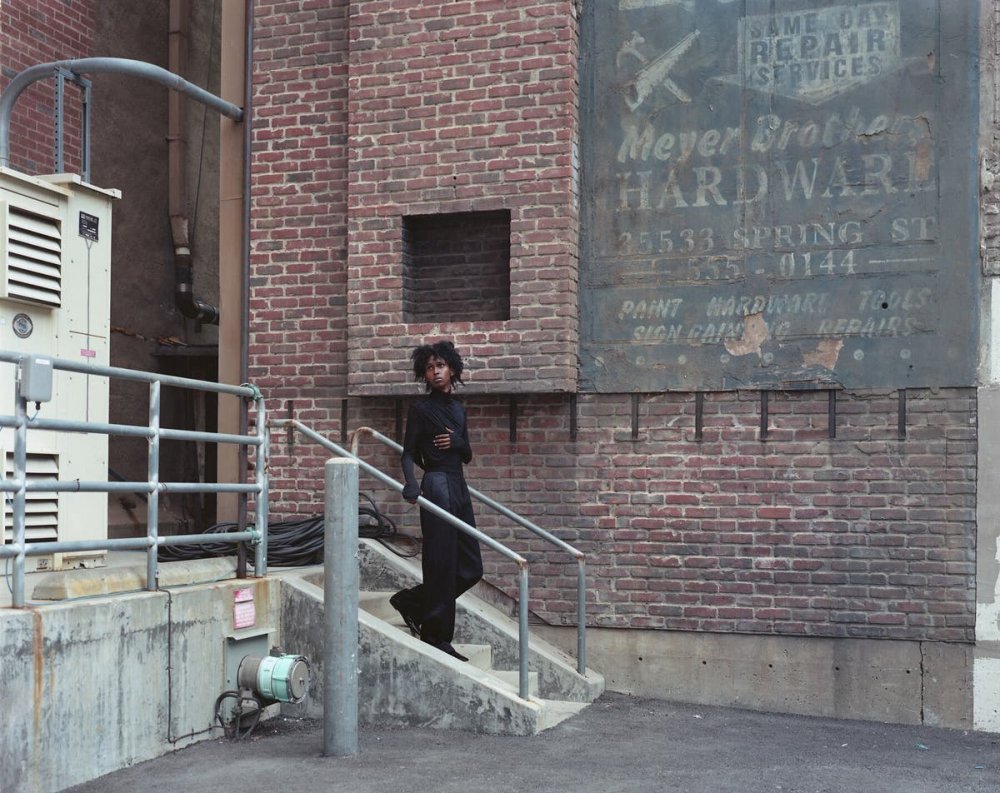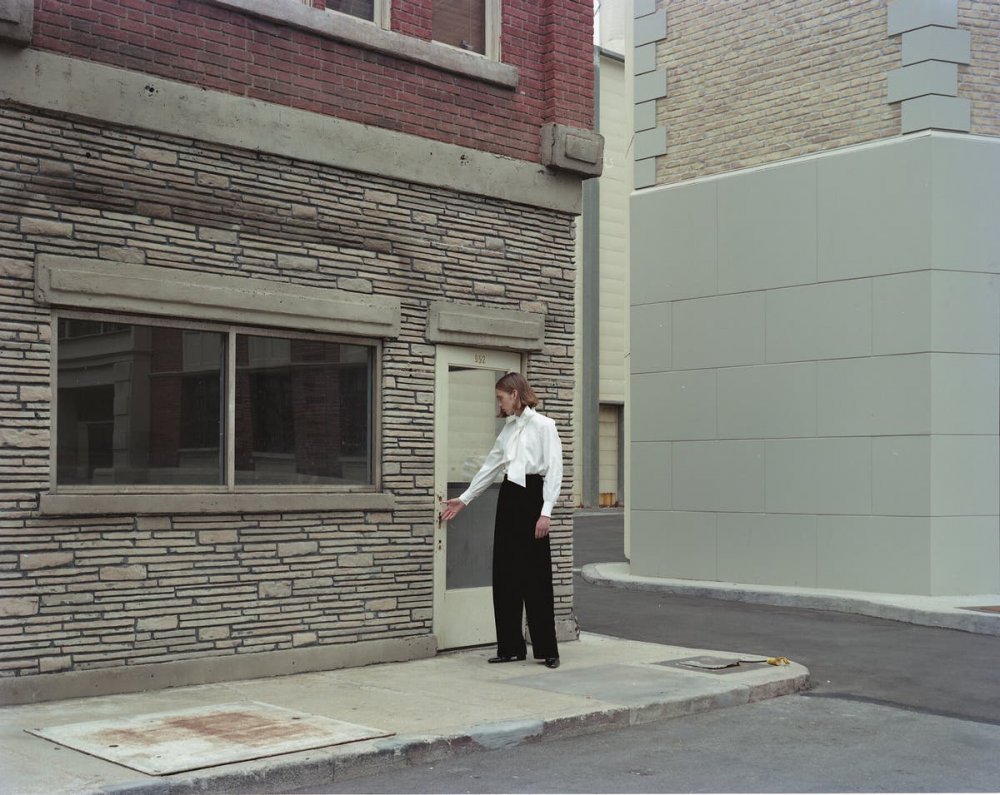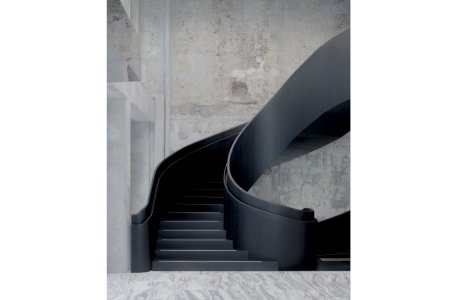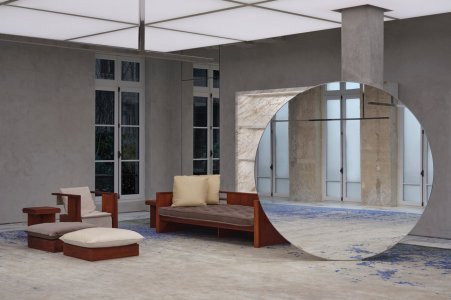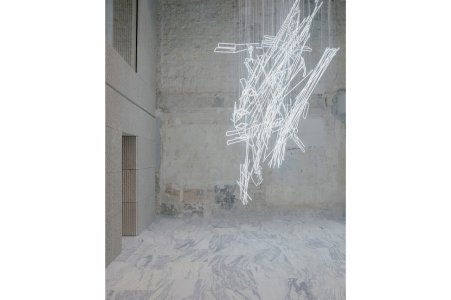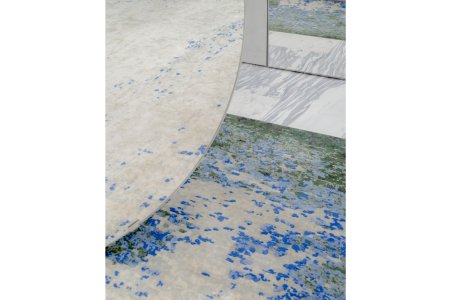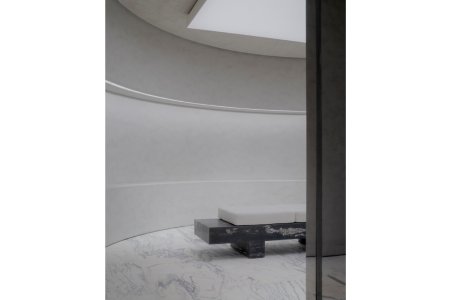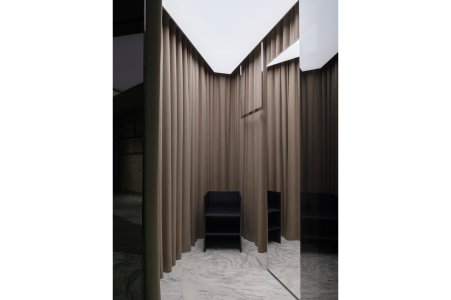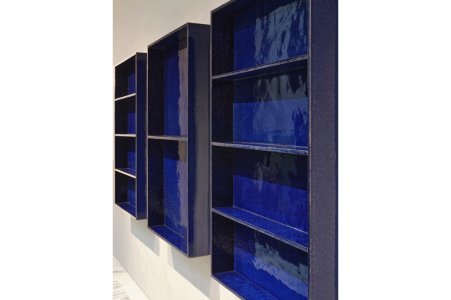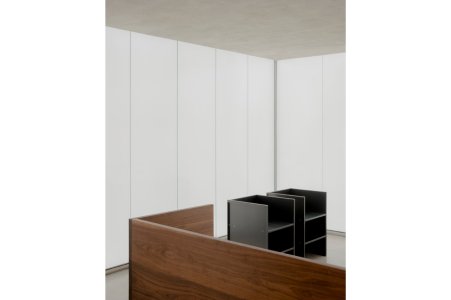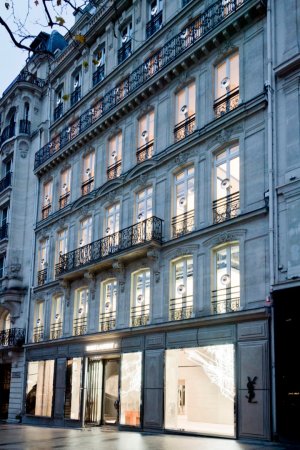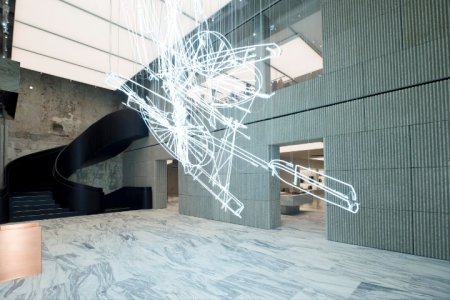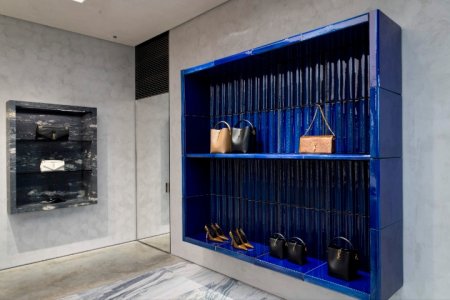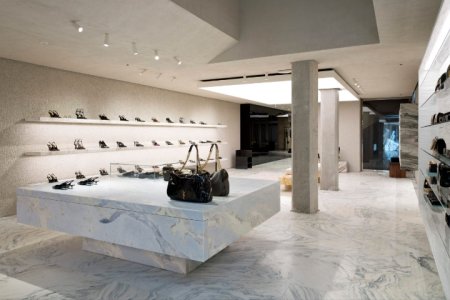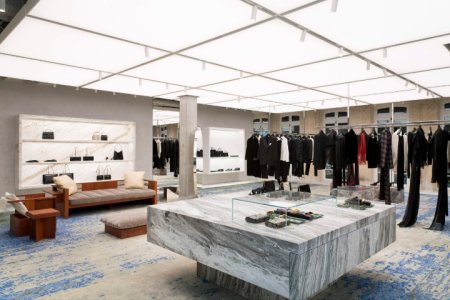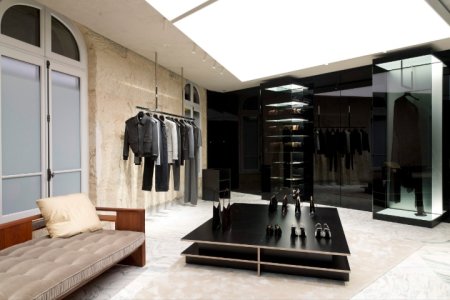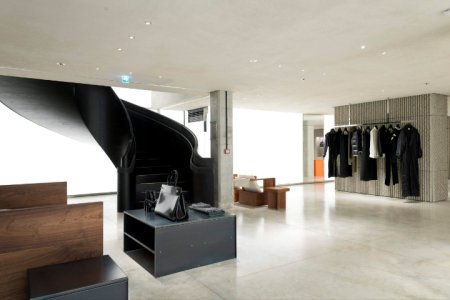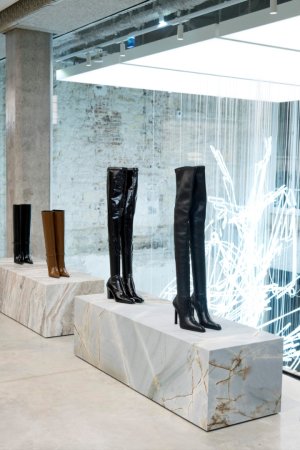How Anthony Vaccarello Made Saint Laurent His Own
To leave his mark on the storied brand, the designer knew he’d have to honor the past — and defy it.
By Nick Haramis
Sept. 5, 2023
Imagine, if you will, that it’s 2016 and you’re Anthony Vaccarello, a reserved and relatively untested fashion designer from Belgium. At 34, you’ve been hired as the new creative director of Saint Laurent, a half-century-old, billion-dollar French fashion house whose heavily mythologized founder, Yves Saint Laurent, created the modern woman’s wardrobe. Growing up, your only two dreams were to live in Paris, preferably with a view of the Eiffel Tower, and to make clothes. Without any industry connections, you managed to circumvent your greatest fear: a life of mediocrity. Your initial reaction is that you deserve this. Your second is, “Now what?”
That spring, Vaccarello arrived for his first day of work at the brand’s atelier, a 17th-century hôtel particulier on Paris’s Left Bank, not far from where Saint Laurent and his longtime lover and lifelong business partner, Pierre Bergé, opened their inaugural ready-to-wear boutique, Saint Laurent Rive Gauche, in 1966. (The pair’s original couture house, located across the Seine at 5 Avenue Marceau, became the Musée Yves Saint Laurent Paris in 2017.) Although Vaccarello was determined not to be “écrasé” — crushed — “by the weight of Yves Saint Laurent,” as he puts it, he soon realized he’d also have to engage with the legacy of Hedi Slimane, his more immediate predecessor. Shortly after Slimane, who’d designed men’s wear for the brand from 1996 to 2000, returned to Saint Laurent in 2012 to oversee all collections, he made the controversial decision to move the creative studio to Los Angeles — but he’d also spent three years supervising the renovation of what would become Vaccarello’s office, filling it with some of his own Art Deco and Louis XVI furniture.
If Slimane’s contribution to the Saint Laurent story “was not a long chapter,” says Vaccarello, it was nonetheless dramatic. In just a few years, he’d dropped “Yves” from the brand’s name, changed the logo and reinstated haute couture, all with Bergé’s endorsement. When Slimane departed in 2016 without an explanation, no one was much surprised — the news had been rumored for months — but they were likely confused: Since his arrival, sales, which had been lagging, had doubled. Vaccarello replaced Slimane with a clear, if unspoken, mandate. It wasn’t enough to reinterpret Saint Laurent’s designs, a complicated enterprise on its own (from the Piet Mondrian-inspired cocktail dresses for his fall 1965 collection to Le Smoking, the revolutionary tuxedo he introduced for women a year later, the couturier created more house codes than any other designer); he was also expected to carry the torch for Slimane, whose androgynous silhouettes and biker jackets had attracted a new generation of customers.
In addition to Saint Laurent, who retired in 2002, six years before his death at age 71, and Slimane, the house had been led by three other big personalities: the late Israeli designer Alber Elbaz, who described his appointment in 1998 as “the realization of my life’s dream,” only to be fired after three seasons when the Gucci Group, then headed up by the American designer Tom Ford and now owned by the multinational conglomerate Kering, acquired the company; Ford himself, the embodiment of sexual sophistication and a marketing savant who’d turned Gucci into a louche powerhouse (he spent five years at the YSL helm, from 1999 to 2004, despite frequent public drubbings by Bergé and a particularly scathing letter from Saint Laurent that read, “In 13 minutes on the runway you have destroyed 40 years of my career”); and the Italian designer Stefano Pilati, appointed in 2004, whose tulip skirt became a sensation in the mid-aughts and about whose tenure Bergé once said, “It is better not to talk about it because it was nothing at all.” (In an email, Pilati, who spent eight years atop the company and understands better than anyone the challenges Vaccarello faced, recalled his “exciting and frightening” early days at the brand. “Everyone [in fashion] wanted to be Mr. YSL,” he wrote. “It’s unimaginable how destabilized the purity of creation was. How vulnerable everyone felt. I did, tremendously.”) To make his mark, Vaccarello knew he’d have to kill more than one father — not an easy task when you’re also meant to honor them.
Except for some art books and magazines, the desk in Vaccarello’s office is bare. Although the designer is shy, he’s not withdrawn like Saint Laurent (whom the writer Alicia Drake describes in her 2006 book, “The Beautiful Fall,” about the fashion scene in 1970s Paris, as a “victim in victory”). His brown eyes are expressive and searching, even if his uniform communicates restraint: He rarely wears anything other than black jeans and a T-shirt with white sneakers. His tattoos — “Arnaud” on his bicep for his husband and design partner, Arnaud Michaux, and “Luca,” the name of their 2-year-old son, on his wrist — feel almost like confessions. “I want to stay private,” he says on a gray morning this past May. “When I get too much attention, I feel the pressure.”
Yves Saint Laurent certainly understood the burden that comes with being put in charge of a legendary fashion house. Three months after Christian Dior’s death in October 1957, his 21-year-old successor was photographed taking a bow on the balcony where Dior routinely received post-show applause. Saint Laurent had been crowned the new dauphin of French fashion, but his fall 1960 collection, whose black turtlenecks and crocodile-embossed black leather jackets conjured the beatnik style of Left Bank bohemians, would rankle conservative clients. That year, while hospitalized for anxiety after reporting for compulsory military duty, Saint Laurent was fired and replaced at Dior by Marc Bohan, his former assistant. He rebounded quickly, creating a brand of his own with Bergé in 1961, but for the rest of his career his creative output seemed inextricably wrapped up with his inner turmoil. “I have grappled with anguish, and I have been through sheer hell,” he said in his retirement speech. “It isn’t quite an art,” he said about his craft. “But it does need an artist to exist.”
In his new role, Vaccarello seemed unsure of himself. “When I look at the beginning of what I did at Saint Laurent,” he says, “there are some pieces that I don’t exactly regret, but it was maybe too much.” But then something began to shift. Donatella Versace, who’d hired Vaccarello — a minimalist, of all things — in 2014 to oversee her diffusion line Versus, admires his evolution. “Anthony’s best quality is that he can do simple clothes, but with a sexy effect,” she says. “He’s the best designer they’ve had at Saint Laurent. And I’m so happy for him because, yes, he wanted this. But also, he didn’t want it.”
From an early age, Vaccarello yearned for a big life. An only child raised by Sicilian immigrants in a modest section of Brussels — his mother, Maria Vitanza, was an office manager, and his father, Giuseppe Vaccarello, a waiter — he grew up visiting museums and listening to classical music at home. “Maybe,” he says, “because it’s something [my parents] didn’t have themselves.” But at night, he and his grandfather watched Berlusconi-era variety shows on Belgium’s only Italian TV channel, mostly for the female presenters who’d dance in skimpy, sequined costumes. At school the next day, Vaccarello drew the women from memory, staging competitions over who had the best dress. “I was obsessed with trying to reproduce what they were wearing,” he says.
Like many gay boys in the 1990s, especially in a city as sober as Brussels — where, Vaccarello says, “nobody dressed for an occasion” — he learned about style by watching Madonna. If the trench coats and big jackets that his mother liked to wear proved Saint Laurent’s trickle-down influence, then MTV and Jean Paul Gaultier, who dressed the pop star in some of her most iconic looks, were indirectly responsible for his “very stretchy,” “very fitted” and “very awful” club clothes. Vaccarello didn’t hide his sexuality from his parents, but he didn’t address it, either. “It was kind of obvious,” he says. “But I never talked about it to anybody. We weren’t open like that. It was more like... not that it didn’t exist. Well, yes, like it didn’t exist.”
Studying fashion hadn’t seemed like a viable option. But a year into Belgian law school (he enrolled because his favorite show, “Ally McBeal,” made being an attorney look fun), Vaccarello entered a period of sustained depression. “It was very dark, and I felt very, very alone,” he says. Although he had trouble articulating his pain, his parents noticed he’d become remote. “They finally saw me,” he says. “It was the first time we really started to talk. I pushed myself to tell them about fashion and how I was going to do that job.”
While the Royal Academy of Fine Arts in nearby Antwerp offered a clearer path to success — in addition to the so-called Antwerp Six, which included Walter Van Beirendonck, Ann Demeulemeester and Dries Van Noten, the school also graduated the designers Martin Margiela, Kris Van Assche and Glenn Martens — Vaccarello applied to La Cambre in Brussels instead. Olivier Theyskens, who dropped out of the university midway through his third year, had just designed Madonna’s gown for the 1998 Oscars. “I was like, ‘OK, if I go to La Cambre, I can dress Madonna,’” he says with a laugh. “I sound like a psychopath.”
The fuller picture is that he doesn’t speak Flemish, Antwerp’s lingua franca, and that the Royal Academy’s avant-garde tendencies didn’t reflect his taste. “I couldn’t understand the point of being ugly,” he says. “It didn’t feel fair to wear a coat with three sleeves or trousers with four legs — it was pretentious and snobby, like a parody of fashion.” He resented the peacockery: If a person could afford designer clothes, why would they choose to look like a clown? “I felt different,” says Vaccarello, who acknowledges that there will always be naysayers who consider his more traditional articulations of beauty less intellectual than those of his experimental peers. “I never considered whether what I was doing was good. I just thought it was right.” When La Cambre rejected his fashion application, Vaccarello pursued sculpture instead, a skill that came in handy two years later when he was at last accepted into the program. “Some colleagues never worried about what was happening in the back of the garment,” he says. “But every angle was important to me.”
Vaccarello met Michaux, whom he married in 2016, on the dance floor at an electroclash concert. They didn’t start dating for two years, but their professional relationship took off immediately. Vaccarello, a skilled but self-described lazy tailor, had big ideas; Michaux, who was a year ahead of him at school, knew how to execute them. The artist David Alexander Flinn, a close friend of the couple’s who has modeled for Saint Laurent, refers to Vaccarello’s clothes as “their visions,” and compares the distribution of labor to a “wonderfully profound stew.” Vaccarello, he says, is responsible for the look and smell of the dish; “Arnaud is the taste.” Michaux, Saint Laurent’s image director, who declined to be interviewed for this story, refuses to discuss fashion with his husband after 6 p.m. “Even if I want to gossip about something,” says Vaccarello, “he’s like, ‘Yeah, I don’t care.’”
In September 2006, Vaccarello received a call from the office of Karl Lagerfeld, who’d seen his leather-heavy graduate collection and offered him a position at Fendi’s fur workshop in Rome. “The job was basically waiting by the fax machine to execute Karl’s sketches,” he says. “I felt kind of useless in the process. It could have been me or it could have been someone else.” (Vaccarello hasn’t attended the Met Gala since 2021 — “It’s becoming a joke,” he says. “I don’t want to be linked to that” — but he did visit the Costume Institute’s recent Lagerfeld show, where he was surprised to find a coat of his with patchwork fur and a butterfly motif.)
Two years into his time at Fendi, Vaccarello was encouraged by the French retailer Maria Luisa Poumaillou to create a collection of his own for her boutique on Paris’s Rue Cambon. That’s when he and Michaux relocated to the French capital and started Anthony Vaccarello. But just as the label of mostly body-hugging, mostly black designs was finding its way — top models were walking in his shows for free, and in 2011 he won a prize, presented to him by a jury that included Bergé and Emmanuelle Alt, then French Vogue’s editor and an early champion of his work — Donatella Versace summoned him to her suite at the Bristol hotel. In Vaccarello’s mind, an audience with Versace was like meeting Madonna. There were bodyguards and a table of sweets. “When she arrived, she filled the room with the smell of perfume,” he remembers. “I was totally seduced.” At Fendi, most of Lagerfeld’s time was taken up by his work for Chanel, but Versace “really wanted to build something with me,” he says. Vaccarello in turn reminded Versace of her brother Gianni, who was killed in 1997. “They were both so insecure,” she says. “Only a genius can be that humble.”
Vaccarello was beginning to settle into his success — at his own label, where he could design without compromise, and at Versus — when, in 2016, his phone rang again. This time it was Francesca Bellettini, Saint Laurent’s president and chief executive officer, who wanted to discuss an opening at the house. He was shocked. “For me, Saint Laurent is the biggest brand in the world. It’s like being called by God,” he says. “I turned to Arnaud and said, ‘What do I do?’ And he said, ‘Go.’” He broke the news to Versace, in an exchange that brought them both to tears, and made the decision a few months later to discontinue his own line.
Vaccarello’s debut for Saint Laurent wasn’t as rapturously received as Yves Saint Laurent’s for Dior. For his first show, held in September 2016 on the construction site of Saint Laurent’s future business headquarters, he sent out a short leather dress with abbreviated leg-of-mutton sleeves, a reimagining of a 1982 silhouette by the brand’s founder, and a strapless black leather dress that left one breast exposed, an iteration of a Slimane look from fall 2015 — itself a nod to an archival Saint Laurent toga dress from spring 1990. For the following few anxious seasons, one sensed he was clinging to his own definition of beauty (the hemlines on his skirts and shorts seemed to rise higher and higher) while simultaneously trying to pay homage to Saint Laurent’s greatest hits: the fur coats, the tuxedos and the safari jackets. Flinn says he noticed the designer absorbing feedback as if he were compiling data. “Anthony has been scrutinized and told his dresses were too vulgar or too sexy,” he says. “But something that I always found is that the women he created were never preyed upon. They were always powerful.”
Like Slimane, Vaccarello was buoyed by Bergé’s approval. (A few months before his death in 2017, during the last lunch they’d have at their usual Japanese restaurant off Avenue Montaigne, he said to Vaccarello, “Please do your own version of Saint Laurent; try to never copy him.”) It helped that the clothes and accessories were selling, which offered him a rare opportunity among today’s designers: time to evolve. Vaccarello, who often finds inspiration in the films of Luchino Visconti and Rainer Werner Fassbinder, can’t develop a garment without creating a character first. Recently, he says, he’s been attracted to the idea of “rencontres at night and those kinds of dangerous things.” Not surprisingly, his runway spectacles — which have been staged in Morocco’s Agafay Desert and by the ocean in Malibu, Calif. — tend to feel more like films than fashion shows (during the height of the coronavirus restrictions in 2020 and 2021, they were actual films).
At the beginning of his tenure at Saint Laurent, it sometimes seemed like Vaccarello was art directing someone else’s movie. But for the past few seasons, he’s been populating his own world. At his women’s show last February, which took place, as it often does, inside a purpose-built black-box structure at the foot of the Eiffel Tower, models came out in variations of the classic Saint Laurent skirt suit with shoulders big enough to bear the weight of a fashion empire. Illuminated by the soft glow of chandeliers — a reference to the ballroom at Paris’s InterContinental hotel, the frequent site of Saint Laurent’s presentations — the women summoned the femmes fatales of Helmut Newton photographs. Sophistication didn’t replace sex outright (there was no shortage of plunging necklines), but the two realms no longer felt at odds. The same was true of the men’s presentation, which was staged a month earlier in the rotunda at the repurposed stock exchange building where François-Henri Pinault, the chairman and chief executive officer of Kering, stores and exhibits his contemporary art collection. In a reversal of Le Smoking, Vaccarello styled wraithlike men in romantic reinterpretations of his own female silhouettes: cowl-neck silk shirts and ones adorned with giant bows, funnel-neck sweaters and hooded cloaks. The collections, which seemed simultaneously rigorous and relaxed, weren’t clever approximations of the past — they were coherent expressions of what glamour and fetish can look like today.
“While I was designing, I never felt that it was right to speak about other designers and their work,” says Tom Ford, who sold his company earlier this year for $2.8 billion. “Now that I’m a free man, I feel inclined to say that I think that what Anthony has done with Saint Laurent has been positively brilliant. So many designers today create collections that are built for photographs but hard to wear. Fashion shows are increasingly all about the spectacle but often devoid of actual things for people to buy. He’s one of the few who still make real clothes.”
On a hot June afternoon, Vaccarello is sitting by the pool at the Soho House in Berlin. He’s here to present his spring 2024 men’s wear collection for Saint Laurent at the Neue Nationalgalerie, Ludwig Mies van der Rohe’s marvel of glass and steel. It’s the perfect setting, especially at dusk, for his display of high-waisted trousers, satin tank tops and capacious jackets — another articulation of the visual language he’s been refining for the past few seasons. Vaccarello’s own late-night adventures are mostly behind him (“I need sleep now that I’m old,” he says), yet he’s found himself fixating on “the dark side of Yves Saint Laurent — even the bad things.”
In retrospect, Saint Laurent’s death portended the beginning of the end for larger-than-life designers. Alexander McQueen, who embellished hand-loomed jacquards with literal demons, killed himself in 2010. Lagerfeld, whose comments often sparked outrage, died in 2019. Marc Jacobs and John Galliano, the bad boys of ’90s grunge and glamour, have been in recovery for years. We’d once expected such designers to communicate their ideas in part through how they carried themselves in the world — to be actualizations of their own aesthetics, complicated and sometimes decadent figures. In Vaccarello’s case, the vision he’s come to express through his clothes doesn’t bear much resemblance to his actual life. He may have landed one of fashion’s dream jobs, but he’s still in some ways channeling — and enabling — the fantasies of an outsider.
A few weeks before the Berlin show, Vaccarello was at the Cannes Film Festival premiering Pedro Almodóvar’s “Strange Way of Life,” a gay western short starring Ethan Hawke and Pedro Pascal for which he designed the costumes and served as an associate producer. Earlier this year, Vaccarello announced the house’s commitment to cinema (affirming a relationship that dates to 1967, when Saint Laurent made the costumes for Catherine Deneuve in Luis Buñuel’s “Belle de Jour”) by mounting Saint Laurent Productions, the first company of its kind fully operated by a fashion brand. “It’s about working with the filmmakers who made me who I am today,” says Vaccarello, who, after decades of consuming culture and interpreting style through movies and TV, is now able to create it himself. “Fashion and film — it’s sort of the same thing, really.”
Jim Jarmusch, the director of “Stranger Than Paradise” (1984) and “Broken Flowers” (2005), surprised even himself when he agreed to make “French Water,” a nine-minute film to promote Saint Laurent’s spring 2021 collection. “I don’t do commercials,” Jarmusch says. “But I was so drawn to his designs.” The pair texted regularly, exchanging “ideas for this kind of surreal little film,” an elegant mood piece in which partygoers played by Indya Moore, Julianne Moore and Chloë Sevigny lose and find and lose each other again. Vaccarello met another trusted collaborator, Gaspar Noé, the director of such polarizing films as “Irréversible” (2002) and “Enter the Void” (2009), in 2016 at Art Basel in Miami Beach. Later, he asked if he could finance Noé’s next project. “What are the conditions?” Noé recalls asking. There were just two: His actors had to be friends of the house and wear Saint Laurent. Noé didn’t have any additional questions — “I won’t ask another film junkie why he’s a film junkie,” he says — and got to work on what would become “Lux Æterna” (2019), a largely improvised feature-length satire about filmmaking starring Béatrice Dalle and Charlotte Gainsbourg as versions of themselves that also showed at Cannes.
Two years later, Vaccarello and Noé reunited for “Summer of ’21,” a short to help market, as its title suggests, the summer 2021 collection. The scene opens on a dense forest bathed in a menacing orange glow. A young woman, played by the model Aylah Peterson, is alone and scared. She hears a terrifying noise in the distance. Screaming, she makes a run for it. She eventually arrives at a mansion that bears a striking resemblance to the Saint Laurent atelier and enters with hesitation; inside, she discovers a dreamlike world of beautiful people in opulent clothing. Slowly, she begins to relax. In time, this house would become her home, too.
Seven years into the job, Vaccarello now has the composure of someone who’s managed to outrun the curse of taking over a brand like Saint Laurent. “I think people have started to understand me recently, which scares me a bit,” he’d admitted back at his office in Paris. But after becoming a father, he also spends less time worrying about what other people might like or want. “I’m more straightforward and I compromise less,” he said. “And I think my work has gotten better since having Luca. Maybe it’s a coincidence, but everything feels more like one vision, one message, one thing.” As he spoke, his eyes wandered across the room. Propped up against an otherwise empty white wall was a framed collage of photographs. In each image, there was Luca — smiling, playing, laughing. Taken together, they felt like stills from a film that had finally come to life.

